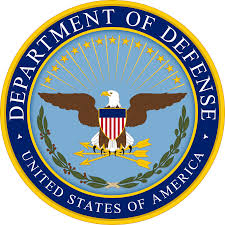
U.S. Department of Defense
Supervisory Aircraft Pilot
 Dana Point, CA,
92629
Dana Point, CA,
92629
Part Time, Full Time
$73,012 per year
Posted 9 days ago
Actively Hiring
Duties:
- Serve as a Supervisory Aircraft Instructor Pilot for the United States Aviation Support Facility (ASF).
- Establish work schedules and priorities for subordinates based on workload.
- Provide training support in all phases of aviation unit operations, aircraft maintenance, and supply functions.
- Formulate, standardize, and implement comprehensive flight standardization, evaluation, and training programs.
- Responsible for the operation of the USAR Aviation Support Facility for the Army Reserve Aviation Command.
Requirements:
Conditions of Employment:
- Must be current in the C-12 or equivalent.
- Must possess and maintain the FAA Flight Instructor Certificate or military equivalent rating.
- Must pass and maintain an annual Class II Flight Physical Qualification.
- Appointment may be subject to a suitability or fitness determination based on a background investigation.
- Must possess a current first-class medical certificate in accordance with FAA regulations at the time of appointment.
- Subject to Drug Abuse Testing Program requirements.
- Requires an annual medical examination.
- Requires a secret security clearance.
Qualifications:
Who May Apply:
- US Citizens.
Basic Requirement:
- Possession of appropriate FAA pilot certificates and/or military ratings, meeting applicable flight hour requirements.
- Flight hours MUST be included in the resume:
- Total flight time: 1500 hours
- Pilot in Command: 250 hours
- Night flying: 75 hours
- Flying Time in Last 12 months: 100 hours (50% may be waived for current employees).
Specialized Experience:
- Must have one year of specialized experience equivalent to at least the GS-12 grade level, including:
- Instructor Pilot (IP) duties.
- Establishing work schedules, setting priorities, and delegating responsibilities.
- Providing feedback and setting performance standards.
- Assisting with operational budgetary requirements.
- Providing training in aviation unit operations, aircraft maintenance, and supply functions.
Education:
- No education requirement for this position; experience is required.
Additional Information:
- Male applicants born after December 31, 1959 must complete a Pre-Employment Certification Statement for Selective Service Registration.
- U.S. citizenship proof required.
- One-year trial/probationary period may be required.
- One-year supervisory probationary period may be required.
- Direct deposit of pay is required.
- Selection subject to Department of Defense referral system for displaced employees.
- Multiple positions may be filled from this announcement.
- Salary includes locality pay.
- No PCS payment is authorized.
- Supervisory Development Course (SDC) must be completed within one year of placement.
Benefits:
- As a federal employee, you and your family will have access to a range of benefits designed to make your federal career rewarding.
How You Will Be Evaluated:
- You will be evaluated based on how well you meet the qualifications listed above. Review of your application package will determine if you meet the qualification requirements.
Required Documents:
- Resume: Must clearly describe your experience and include hours worked per week and dates of employment.
- FAA Certificates or Military Ratings: Must be included in the application.
- Other Supporting Documents (optional):
- Cover letter.
- Most recent performance appraisal (if applicable).
- Job-related license/certification (if applicable).
How to Apply:
- Submit your application online via USAJOBS before 11:59 PM (EST) on 11/29/2024.
- Complete the online questionnaire and submit the required documents.
- You must be logged into your USAJOBS account to apply (create an account if you don’t have one).
What other people searched near you
Aircraft pilot jobs near me
Aircraft pilots near me
Aircraft pilot job description
Aircraft pilot training
Airline pilot entry level salary
Airline pilot eyesight requirements
Aircraft pilot monthly salary
Pilot qualification aviation
Searches you may like
Jobs in California
Employment in Dana Point, CA
Job openings near me
Jobs hiring now
Local jobs near me
FAQ's
Find the answers for the most frequently asked questions below